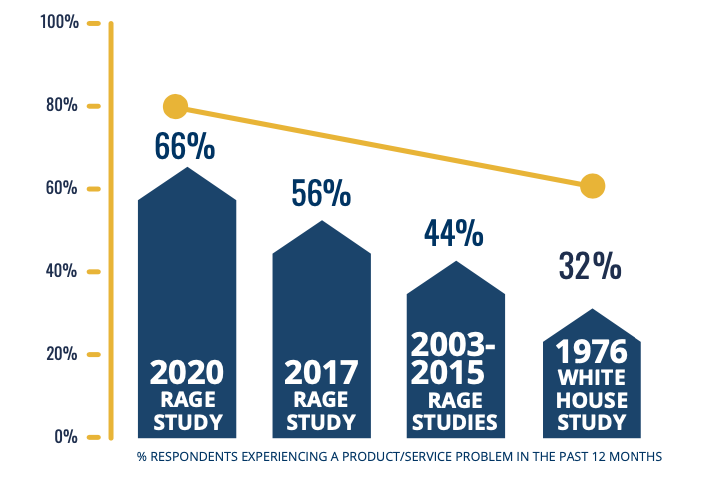"Nope."
The contact center agent shook his head as he scanned the quality assurance form. We had just sat down to review a call, and it wasn't going well.
"Nope," he said again.
The call had been fairly good overall, but that's not what he focused on. The agent was fixated on the score. Specifically, the points he didn't receive.
He scanned the report while tuning out my feedback, saying "Nope" anytime he saw a score he disagreed with. It was a frustrating conversation.
In retrospect, it's hard to blame him.
He knew his performance was ultimately judged by the score, and the scores were a bit arbitrary. Why was one behavior worth six points while another one was worth four? I didn't do myself any favors by just setting the score sheet down in front of him at the start of the conversation.
It wasn't until much later that I discovered a way to give clear, unvarnished feedback without agents getting defensive about the score.
The solution? Eliminate the score.
What is contact center quality assurance?
I realize some readers might not be familiar with the quality assurance process in contact centers. Here's a brief overview.
You've probably heard that disclaimer at the start of the call, "This call may be recorded for quality and training purposes." Many contact centers record customer phone calls and this disclaimer is often required for legal reasons. They also capture emails, chat sessions, social media responses, and other customer communication.
In a typical contact center, a checklist is used to evaluate a sample of each agent’s recorded contacts as part of the QA process.
The checklist contains a series of required actions or behaviors used to evaluate each interaction. Many of these checklists also assign points for each behavior, and the points are tallied to give agents a total score.
QA can be an important part of agents' job evaluations.
Why quality assurance scores are a problem
"Well, that's friendly for me."
The agent clearly wasn't friendly on the call. Her monotone voice sounded bored, perhaps even a little put-off by her customer's reasonable request.
But "friendly" was worth 10 points on the quality assurance (QA) form, so the agent was arguing. The discussion had devolved into a debate about points rather than how to project more friendliness on the next call.
This often happens when we attach an arbitrary score to an employee's review. The score becomes the focal point and the intended behaviors get pushed aside. Any loss of points can feel like a slap.
The worst part for a supervisor is the scores are hard to defend.
What exactly is friendliness?
What does 10 points worth of friendliness sound like compared to five?
Can you still be friendly if you sound like a grumpy robot?
Inevitably, score-based QA takes the focus away from constructive feedback and turns review sessions into arguments about points.
What is scoreless QA?
Scoreless QA is a quality assurance process that focuses on behaviors rather than points. For many contact centers, the transition can be as easy as eliminating the scores from your existing process.
For example, let's say an agent is required to verify a customer's identity before discussing private account information. When you review a call, the agent either correctly verified the customer's identity or they didn't.
It's the behaviors that count, but points often get in the way.
Jeremy Hyde, Director of Customer Service at Sun Country Airlines, explained the benefit of removing the points. "The idea behind no score is avoiding the argument of 'that call was a 93, not a 92!' rather than focusing on feedback."
Eliminating the points makes it easier to focus the conversation on helping the agent do a better job the next time.
"We use scoreless QA sheets but still track areas of focus and quality expectations," said Kristine Berken, a customer loyalty team lead at Cellcom. "We find reps react more positively to this method as it creates less anxiety or 'big brother' feelings."
How to create a metric without a score
The biggest objection to scoreless QA comes from supervisors who want a clear metric to evaluate agent performance and to track overall trends. Here's where scoreless QA really shines.
Let's say you monitor five calls for a particular customer service agent. The agent provides the correct answer to all customer questions on just three out of five calls.
You now have a tangible, actionable metric!
Goal performance: provide the correct answer 100% of the time.
Actual performance: provided the correct answer 60% of the time.
Gap: improve accuracy by 40 percentage points.
Removing the score shifts the conversation from earning more points to "How do you ensure you give correct information on your next call?" (By the way, this blog post can give you some ideas as to why reps give out the wrong information.)
The goal of the QA discussion should be helping the agent identify expected behaviors for the next contact and agree to try them.
Jeremy Watkin, Director of Customer Experience and Support at Number Barn, offered this three-step process on his Customer Service Life blog for giving behavior-based feedback:
Start by discussing what worked.
Now discuss areas for improvement.
Wrap-up by discussing goals for future calls.
You can also identify macro-trends across your contact center without QA scores.
Perhaps you identify "prevent future calls" as an area for improvement. A roll-up of your QA results for the month shows that agents are doing this 82 percent of the time.
You can then drill down and try to find the root cause.
What issues tend to drive future calls?
Do agents know how to recognize these issues and prevent them?
Are there particular types of issues agents fail to prevent?
Conclusion
You can immediately improve the quality of feedback you share with your agents by getting rid of arbitrary scores. This reduces noise and focuses the conversation on what matters—improving calls.







